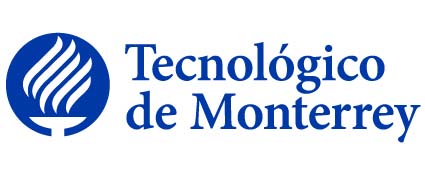
|
|||||
Disciplina asociada:Humanidades |
|||||
Escuela:
Humanidades y Educación
|
|||||
Departamento Académico:
Medios y Cultura Digital
|
|||||
Programas académicos: |
|||||
Requisitos:No tiene. |
|||||
Equivalencia:H1014 |
|||||
Intención del curso en el contexto general del plan de estudios: |
|||||
|
Curso de nivel básico del área de formación musical, cuya intención es proporcionar al alumno las herramientas básicas para situar una obra de acuerdo al período musical en la que fue escrita (siglos XIV-XVII), considerando las características esenciales de dicho período, además de desarrollar una capacidad de crítica que fomentará la mejor apreciación de una gran variedad de obras, inclusive en el análisis del repertorio en la producción musical post-moderna y contemporánea. No requiere conocimientos previos. Como resultado de aprendizaje el alumno comprenderá la estructura general de la música clásica occidental en los siglos XIV-XVII, de acuerdo a su evolución histórica y gramatical, vinculándola a la producción musical post-moderna. |
|||||
Objetivo general de la Unidad de Formación: |
|||||
|
Al finalizar el curso el alumno será capaz de: |
|||||
Técnica didáctica sugerida: |
|||||
| Aprendizaje colaborativo | |||||
Bibliografía sugerida: |
|||||
|
LIBROS DE TEXTO: * Kerman, Joseph, Listen [sound recording], Brief 4th ed., Boston ; New York : Bedford/St. Martin's, 2000, , 1572597968 LIBROS DE CONSULTA: * Down, P., Classical Music: the Era of Haydn, Mozart and Beethoven, Norton, NY, 1992, * AA.VV., The New Grove Dictionary of Music and Musicians, MacMillan Press, London, 2000, * Roldán Samiñán, Ramón, Historia de las Formas Musicales, Si Bemol, Ediciones, 1998, * Enge, Hans; Honolka, Kurt; Netil, Paul; Reinhand, Kurt; Stäblein, Bruno., Historia de la música, Edaf, Editorial, 2005, * Yudkin, J., Music in the Middle Ages, Norton, NY, 1994, |
|||||
Perfil del Profesor: |
|||||
|
(500901)Maestría en Música ; (500901)Doctorado en Música CIP: 500901 |
|||||
|
|||||
Discipline:Humanities |
|||||
School:
Humanities and Education
|
|||||
Academic Department:
Digital Media and Culture
|
|||||
Programs: |
|||||
Prerequisites:None. |
|||||
Equivalences:H1014 |
|||||
Course intention within the general study plan context: |
|||||
|
The purpose of this basic music-education course is to provide students with basic tools to understand a musical work in its context of production (14th-17th centuries), taking into consideration the essential characteristics of that period, as well as developing the critical ability to better appreciate a wide variety of works, including analysis of the repertoire for post-modern and contemporary musical production. No previous knowledge is required. The learning outcome of this course is for students to understand the general structure of Western classical music from the 14th to the 17th centuries, following its historical and structural evolution by relating this to postmodernity. |
|||||
Course objective: |
|||||
|
Upon completion of this course, students will be able to appreciate the influence of historical evolution on musical composition and on the comprehension of the structure of music. Students will develop the capacity for critique and analysis by studying the vocabulary, genres, forms and styles of Western 16th to 17th century music in relation to post-modern musical production. To do so, students are supposed to attend music events and actively participating in a concert through an activity such as playing music, visual art creation, stage management or research work. |
|||||
Teaching and learning tecnique: |
|||||
| Collaborative learning | |||||
Suggested Bibliography: |
|||||
|
TEXT BOOKS: * Kerman, Joseph, Listen [sound recording], Brief 4th ed., Boston ; New York : Bedford/St. Martin's, 2000, , 1572597968 BOOKS FOR CONSULTATION: * Down, P., Classical Music: the Era of Haydn, Mozart and Beethoven, Norton, NY, 1992, * AA.VV., The New Grove Dictionary of Music and Musicians, MacMillan Press, London, 2000, * Roldán Samiñán, Ramón, Historia de las Formas Musicales, Si Bemol, Ediciones, 1998, * Enge, Hans; Honolka, Kurt; Netil, Paul; Reinhand, Kurt; Stäblein, Bruno., Historia de la música, Edaf, Editorial, 2005, * Yudkin, J., Music in the Middle Ages, Norton, NY, 1994, |
|||||
Academic credentials required to teach the course: |
|||||
|
(500901)Master Degree in Music and (500901)Doctoral Degree in Music CIP: 500901 |
|||||